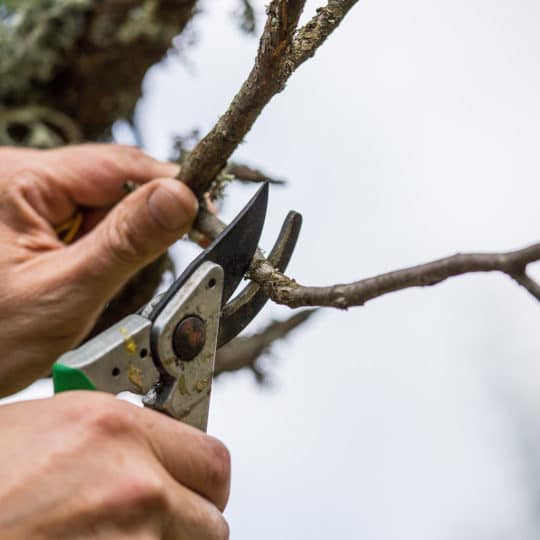Reasons Why You Should & Shouldn’t Prune Trees in the Fall
And the Best Season for Pruning
Posted
October 17, 2024

Tree pruning is an important part of maintaining plant health and vitality. But done incorrectly, it can cause more harm than good. Learn how to properly prune trees in the fall and why you should wait to do any extensive work.
The Benefits of Tree Pruning
There are many reasons to prune a tree. Mainly it’s to remove the old, dead branches and encourage new, healthy growth. Making a fresh cut motivates the plant to use energy to heal the wound and replace the branch. However, the conditions need to be right to ensure new growth can thrive. It all depends on the type of tree, the climate, and the reasons for pruning.
Since pruning a tree can trigger growth, it’s best to wait until the plant is about to enter growing season. This is one of the reasons why late winter and early spring are the best times to prune. Not only are the trees still relatively bare, which makes it easy to see the full branches, but they’re about to transition out of dormant season. This limits stress on the tree and gives them the rest of spring to heal before harsh summer weather sets in.
How to Prune Trees in the Fall
Even though fall is not the ideal time to prune, it’s still possible to cut certain branches without too much stress. Some trees respond to fall pruning better than others, so check the specifics of your tree type before any pruning project. Here’s what you could cut in the fall:
- Diseased branches. Reduce the risk of spreading infections by removing branches with discolored growths and other signs of disease.
- Infested branches. Dead and diseased branches can also attract pests, so remove any to prevent further damage.
- Prepare for winter. Remove weak or broken branches to limit the threat of them breaking off under the pressure of snow, ice, and wind.
Be careful not to remove too many branches. If there’s a significant amount of dead or diseased limbs, get your tree inspected by a professional to determine whether pruning is the best option.
Why You Shouldn’t Prune Trees this Season
If your tree looks healthy, there’s no reason why it should be pruned in the fall. In fact, pruning too much can negatively impact tree health and growth. Here’s why you should wait.
- Promotes new growth at the wrong time. These tender buds may not have time to harden before winter, making them vulnerable to frost damage.
- Increased risk of pests and disease. Fresh pruning cuts create entry points for some disease-causing pathogens. It also releases a scent that attracts any pest still active in the fall.
- Weakens the tree. During the fall, a tree is storing energy to help it survive the winter. When you prune, it uses that energy to heal the wounds. This leaves less energy to withstand the cold and winter storms.
- Disrupts natural healing process. Trees heal faster during its growing season in the spring. If a wound doesn’t heal before winter, it’s more susceptible to damage.
Instead of pruning this season, use the time to prepare your tree for winter. Water, mulch, and assess its shape to determine whether the branches are stable enough to survive the added weight of snow and ice. If there’s any cause for concern, contact Elite Tree Care for support options. Our certified arborists can also advise on which branches should be removed during dormant season. This way both you and your tree will be ready to make the right cuts for healthier growth.

Download Your FREE Tree Pruning Guide
Learn how, when, and how much to trim or prune your trees to maximize their health and beauty. This guide covers the factors that go into tree trimming (pruning) and will help you make a more informed decision about hiring a professional tree service.